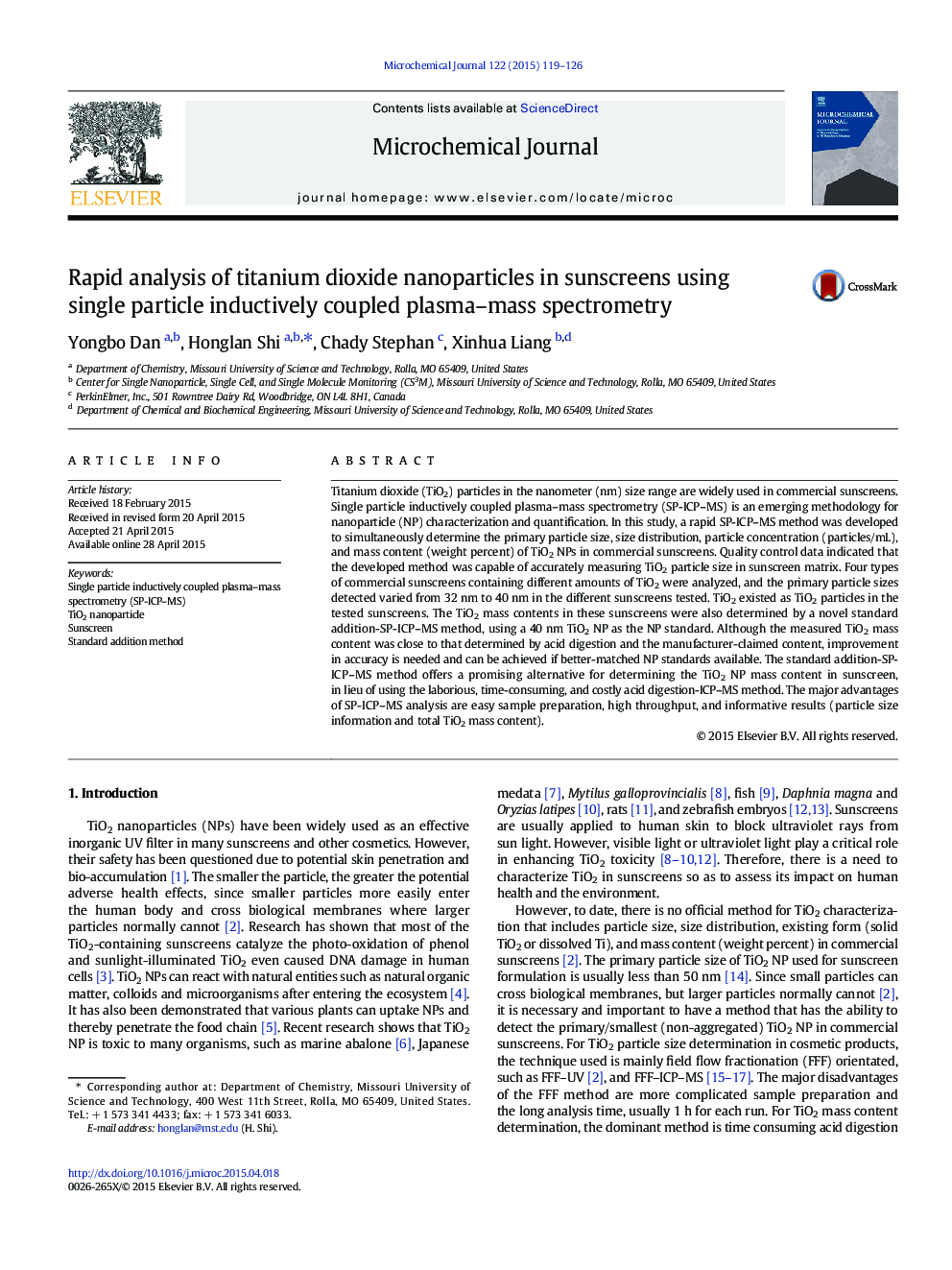| Article ID | Journal | Published Year | Pages | File Type |
|---|---|---|---|---|
| 1227769 | Microchemical Journal | 2015 | 8 Pages |
•SP-ICP–MS method was developed for TiO2 nanoparticle analysis in sunscreen matrix.•The measured TiO2 particle sizes varied from 32 nm to 40 nm in tested sunscreens.•The sample preparation is easy and the analysis time is short (several minutes).•Standard addition-SP-ICP–MS method was developed for TiO2 mass content analysis.
Titanium dioxide (TiO2) particles in the nanometer (nm) size range are widely used in commercial sunscreens. Single particle inductively coupled plasma–mass spectrometry (SP-ICP–MS) is an emerging methodology for nanoparticle (NP) characterization and quantification. In this study, a rapid SP-ICP–MS method was developed to simultaneously determine the primary particle size, size distribution, particle concentration (particles/mL), and mass content (weight percent) of TiO2 NPs in commercial sunscreens. Quality control data indicated that the developed method was capable of accurately measuring TiO2 particle size in sunscreen matrix. Four types of commercial sunscreens containing different amounts of TiO2 were analyzed, and the primary particle sizes detected varied from 32 nm to 40 nm in the different sunscreens tested. TiO2 existed as TiO2 particles in the tested sunscreens. The TiO2 mass contents in these sunscreens were also determined by a novel standard addition-SP-ICP–MS method, using a 40 nm TiO2 NP as the NP standard. Although the measured TiO2 mass content was close to that determined by acid digestion and the manufacturer-claimed content, improvement in accuracy is needed and can be achieved if better-matched NP standards available. The standard addition-SP-ICP–MS method offers a promising alternative for determining the TiO2 NP mass content in sunscreen, in lieu of using the laborious, time-consuming, and costly acid digestion-ICP–MS method. The major advantages of SP-ICP–MS analysis are easy sample preparation, high throughput, and informative results (particle size information and total TiO2 mass content).
